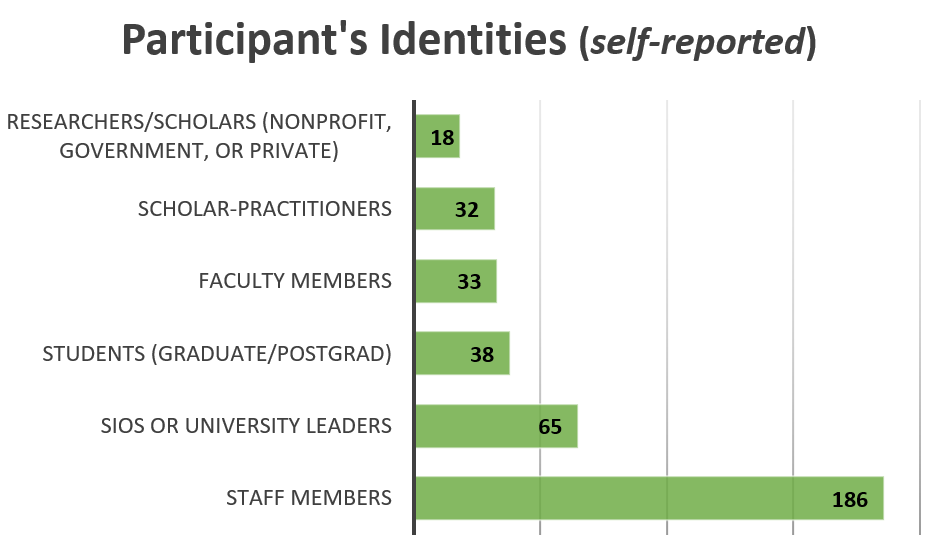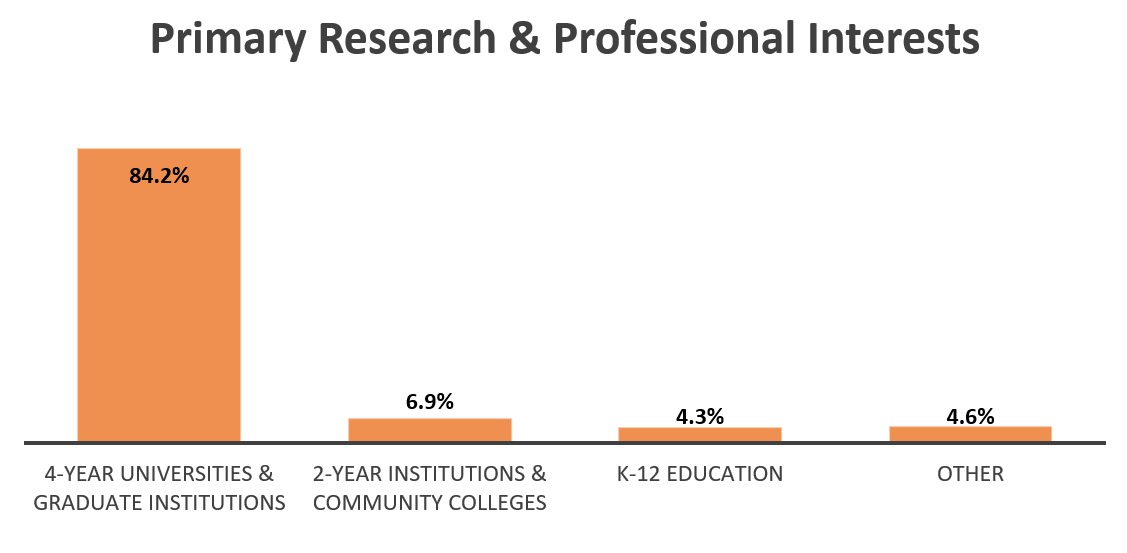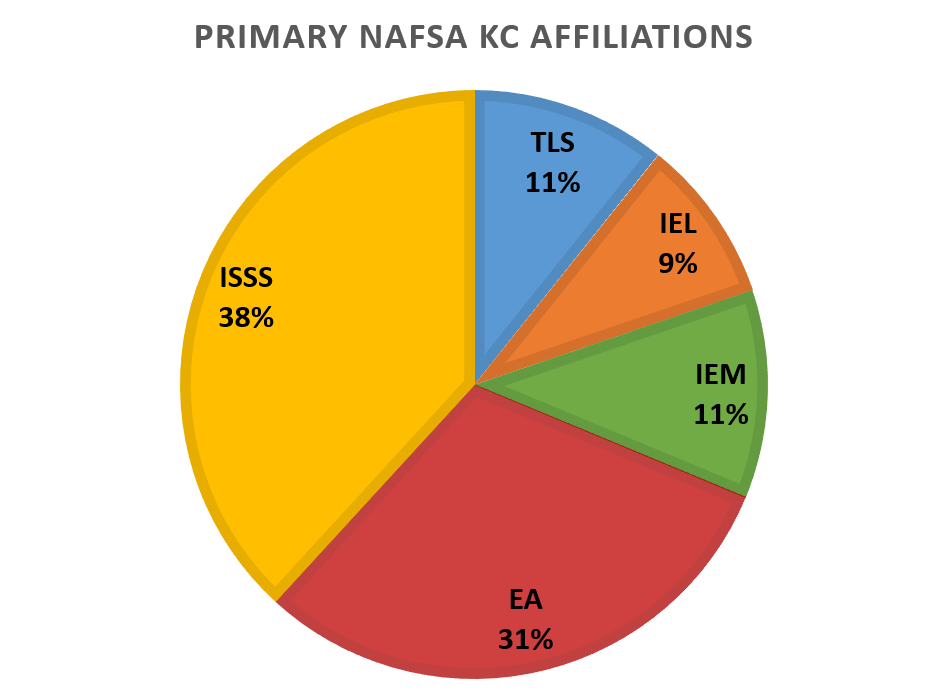Written By: Shanna Saubert, PhD (Associate Director, Research & Scholarship at NAFSA: Association of International Educators) and Emily Gorlewski, EdD (Associate Director of Study Abroad at Wesleyan University & the Research & Scholarship network leader for the NAFSA Teaching, Learning, and Scholarship [TLS] Knowledge Community [KC])
On a day-to-day basis, it becomes clear that researchers and scholar-practitioners need information. They want to know about current hot topics as well as what is missing (i.e., identifying gaps that need to be filled). With the intent to present preliminary findings at a session at the NAFSA 2018 Annual Conference in Philadelphia last May, in early 2018, we surveyed professionals in the field of international education to find out more about their perceptions regarding:
- What topics international educators feel are currently being addressed in published research;
- What topics international educators feel are the most important to address in published scholarship according to their own interests; and
- What topics international educators feel are missing from the currently available research and scholarship.
An online survey was designed to allow individuals to answer the questions and focus on topics relative to their own Knowledge Community (KC) affiliation/s within NAFSA – Education Abroad (EA), IEL, IEM, ISSS, and/or TLS. A total of 376 responses were received, with 288 completed responses available for analysis. Here we highlight some of the major findings from the survey.
Participants

*nearly 23% reported having two or more roles in international education, including 20 who were pursuing postgraduate degrees (PhD/EdD)


- 64% were not TLS members, yet 26% of the TLS members indicated they have interests in other KC-relevant research (EA, ISSS, IEL, or IEM).
Findings from the Survey
Here we highlight some of the responses that cut across different KCs. There were also responses that were received which were more specific to each KC.
|
What is Being Published?
|
TLS
|
EA
|
IEL
|
IEM
|
ISSS
|
|
Assessing student learning outcomes
|
x
|
x
|
x
|
|
|
|
Incorporating global learning
|
x
|
x
|
|
|
|
|
Recruitment strategies & politics
|
|
|
x
|
x
|
|
|
Intercultural communication & diversity
|
x
|
x
|
|
|
x
|
|
Supporting diverse student populations
|
x
|
x
|
x
|
x
|
x
|
|
What are the Most Important Topics?*
|
TLS
|
EA
|
IEM
|
ISSS
|
|
Assessing student learning outcomes
|
x
|
x
|
|
|
|
Intercultural communication & diversity
|
x
|
x
|
|
x
|
|
Supporting diverse student populations
|
x
|
x
|
|
x
|
|
Politics / The Trump Effect
|
|
|
x
|
x
|
|
Health & safety (separate from mental health)
|
|
x
|
|
x
|
|
Programs & initiatives
|
|
x
|
|
x
|
*IEL didn’t provide enough similar responses to be comparable
|
What is Missing From the Literature?*
|
TLS
|
EA
|
ISSS
|
|
Learning outcomes
|
x
|
x
|
|
|
Supporting diverse students
|
|
x
|
x
|
|
Intercultural/cultural competence & skills
|
|
x
|
x
|
* IEL didn’t provide enough similar responses to be comparable & IEM responses focused more on practical matters than research per se.
As displayed in the three charts above, it is interesting that there were some significant overlaps between the responses gathered according to each KC. However, in analyzing the survey data, we were struck by: the differences between the answers chosen from the list provided and those that were written in; the similarities between what participants said was and was not being published; and the specificity of some of the topics that the participants desired. There were also noted distinctions based on KC-specific responses:
- IEL responses were concerned with the connection between the global and local and the impact of campus internationalization on home communities, as well as community colleges.
- EA responses included issues related to prior research quality, new models for intercultural communication and competence assessment, institutional support and the impact of study abroad on home universities and host communities, diversity and education abroad group dynamics, and whether the skills learned during education abroad are transferable to domestic diversity.
- IEM responses tended to be more practice-based (ROI, trends, document verification, credential evaluation, efficiency, diversifying recruitment efforts), but also indicated an interest in practical research focused on repatriation concerns, potential collaboration with EA on partnerships, managing alumni communication & contacts, and further in-depth studies on different countries and academic disciplines.
- ISSS responses also focused on practitioner issues (skills, employment, gender imbalance, how to explain what we do), as well as bridging international and domestic student populations, research on students not from the top three sending countries, and (alternatively) research on students from each of the top three sending countries.
- TLS responses identified unique issues related to rigor, access and inequality, and ethical study abroad. While several of the responses aligned with other NAFSA KCs, TLS was the only KC to mention internationalizing the curriculum, faculty & professional development, language issues & the role of language for mobile students, interdisciplinary collaborations, teacher training, and nondominant perspectives (not U.S., European, or Australian).
Several respondents raised issues of quality or rigor in previous research and called for different types of studies (i.e., more longitudinal research, more quantitative research with larger sample sizes, and research designs that control better for bias). This is something to keep in mind as a broad range of researchers, from practitioners to graduate students to scholar-practitioners to faculty members, undertake these projects.
Many respondents reported gaps in the literature that were extremely specific. Unfortunately, due to the anonymous design of the survey, we could not determine whether these were graduate students looking at topics for their own research or if they were practitioners who needed answers to specific questions that would inform their work. Some examples include “bridging the gap between international and domestic students who share the same ethnic origin,” “African Americans studying abroad,” and “gender gap among international education professionals.” There were also a few responses about specific institution types such as community colleges and MSIs. It seems there may have also been confusion in separating research topics from practical needs, such as the case of credential evaluation or document verification for IEM.
We also wondered if people were understanding the differences among the questions: what is being published, what is important, and what are the gaps. In two of the KCs, for example, assessment of student learning outcomes was identified as something on which research was being published, but also as a gap in the literature.
- Are some practitioners not aware of the existing literature?
- Is there something that NAFSA or the TLS KC could do to better disseminate this information, and bring the research to the practitioners?
- Is the existing research insufficient? Or does it not provide practical solutions?
This survey was focused on identifying perceptions regarding research in the field, but many international educators may still need assistance in identifying more appropriate practical resources. With this in mind, the following NAFSA resources may be of particular interest in identifying research resources relevant to specific KCs:
- NAFSA Research Connections – search the Library content using your desired keywords or existing tags within the network.NAFSA system, which is open to both members and nonmembers of NAFSA. The Library includes summaries and abstracts of recently produced research reports and published articles that are relevant to international educators across NAFSA. Recent blogs have focused on technology, impacts and outcomes, and where to find research.
- Plan on attending the NAFSA Research Symposium to find out more about and discuss connecting research to practice in international education. (Events are held twice a year, once in the spring and once during International Education Week) - Check out discussions on social media via #NAFSAResearch and #IEW2018
- Join the Teaching, Learning, and Scholarship (TLS) Knowledge Community and raise your questions with others. This KC is pan-NAFSA and brings together faculty, administrators, graduate students/post-docs, researchers, intercultural trainers, cross-cultural counselors, and other professionals in international education. Featured projects include the Global Studies Literature Review, Graduate Student Central, and the annual Innovative Research in International Education Award.
- Read NAFSA Trends & Insights and the latest issue of the International Educator magazine to be alerted to features and articles written by practitioners in the field on important innovations and ongoing initiatives.
- Consider attending (and submitting proposals for) the Research in International Education poster fair at the NAFSA Annual Conference. Many sessions at the conference are presented by scholar-practitioners and focus on bridging research and practice. The deadline for session proposals has already passed, but poster proposals will be accepted until January 9, 2019.
We invite others to comment below with resources that they’ve found particularly helpful in identifying relevant research.
#ResearchandScholarship